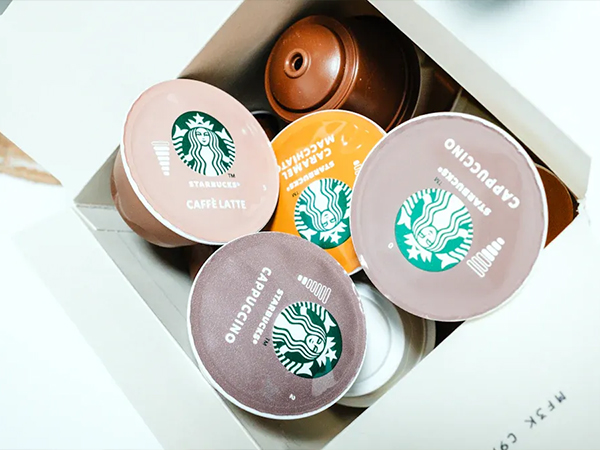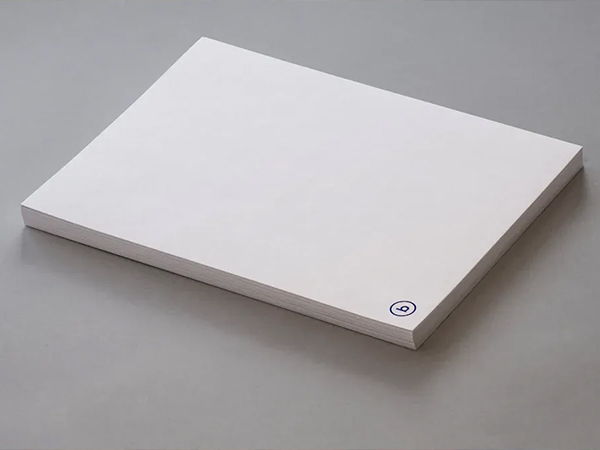
You rely on paper products that stand up to daily use, deliver crisp print results, and resist water or grease. Surface sizing agents play an essential role in modern papermaking by strengthening paper and improving its performance. These agents boost resistance to liquids and enhance qualities like brightness and opacity. When you use paper treated with surface sizing agents, you benefit from improved durability and higher market value, as industry reports confirm these agents drive positive growth trends.
Key Takeaways
- Surface sizing agents enhance paper strength and durability, making it more resistant to tearing and abrasion.
- Choosing the right surface sizing agent improves print quality by controlling ink absorption and reducing bleed.
- Surface sizing agents provide water resistance, crucial for applications like packaging and outdoor use.
- Regular testing of water resistance, surface strength, and printability ensures consistent quality in paper products.
- Consider factors like compatibility, environmental impact, and cost-effectiveness when selecting surface sizing agents.
Surface Sizing Agents Overview
What Are Surface Sizing Agents
Surface sizing means applying a thin layer of sizing agent to the surface of paper after it has been formed. This simple step gives paper new properties and significantly improves performance.
You use surface sizing agents to manage how your paper interacts with liquids, especially water and ink. These agents form a thin film on the paper’s surface after drying. This film enhances water resistance, printability, and overall strength. Surface sizing agents possess both hydrophobic and hydrophilic properties. The hydrophilic tail binds to the paper fibers, while the hydrophobic tail faces outward, creating a protective barrier. This dual action helps you achieve better surface strength and reduces ink bleeding, which is essential for high-quality printing and packaging.
When you choose the right surface sizing agents, you can expect:
- Enhanced surface strength
- Increased water resistance
- Reduced ink bleeding and improved print quality
Types and Materials
You have several options when selecting surface sizing agents for your papermaking process. The most common types include:
- Modified starches
- Styrene Maleic Anhydride (SMA)
- Styrene Acrylic Emulsion (SAE)
- Styrene Acrylic Acid (SAA)
- Ethylene Acrylic Acid (EAA)
- Gelatin
- Polyurethane (PUR)
Each material offers unique benefits. Modified starches, for example, provide improved flexibility and compatibility with synthetic fibers. Synthetic polymers, such as SMA and SAE, deliver superior strength and durability. The table below compares modified starches and synthetic polymers to help you make an informed choice:
| Feature | Modified Starch | Synthetic Polymers |
|---|---|---|
| Flexibility | Improved flexibility and elongation | Generally less flexible |
| Compatibility | Better with synthetic fibers | May not bond well with all fibers |
| Shelf Life | Longer, resists fermentation | Varies, often shorter |
| Eco-Friendliness | Renewable and biodegradable | Petroleum-based, less eco-friendly |
| Cost-Effectiveness | More affordable for large scale | Often more expensive |
| Strength/Durability | Good, but less than synthetics | Superior strength and durability |
By understanding these materials and their properties, you can select the best surface sizing agents to meet your specific needs.
Key Benefits

Strength and Durability
You expect your paper products to withstand daily handling, folding, and transportation. Surface sizing agents play a critical role in boosting both the surface and physical strength of paper. When you apply these agents, you create a protective layer that bonds surface fibers together. This process increases resistance to tearing, bursting, and abrasion. As a result, your paper performs better in demanding applications, such as packaging, books, and specialty papers.
Surface sizing agents improve water resistance and surface strength. They enhance print quality and runnability. They support packaging and cultural paper performance.
The following table highlights how carboxymethyl cellulose (CMC), a common surface sizing agent, affects key paper properties:
| Property | Effect of CMC on Paper |
|---|---|
| Surface Strength | Improves surface strength of paper |
| Physical Strength | Enhances overall physical strength |
| Printing Quality | Improves printing and dyeing effects |
| Water Retention | Enhances water retention capabilities |
You gain practical benefits, such as improved resistance to tear and abrasion. This means your paper can handle rough processing and frequent use without losing integrity.
Printability
High-quality print results depend on how well your paper interacts with ink. Surface sizing agents help you achieve sharp, vibrant images and text by controlling ink absorption and preventing excessive penetration. When you use the right sizing agent, most ink remains on the surface, which leads to brighter colors and clearer lines.
Studies show that the type of surface sizing agent you choose directly influences ink pigment penetration. Cationic surface sizing agents, for example, enhance smoothness, ink repellency, and opacity. These improvements result in better print quality and less ink bleed. You also benefit from increased runnability during high-speed printing. Enhanced surface properties reduce the risk of paper jams and mechanical stress, supporting faster production and lower costs.
- Cationic surface sizing agents improve resistance to moisture, ink, and mechanical stress, which leads to smoother printing.
- These agents increase strength and durability, making your paper more resistant to tearing and folding.
- You experience higher productivity and reduced downtime in papermaking and printing operations.
You can see the impact of surface sizing agents in specialty papers, such as food packaging and security paper. These applications demand both excellent printability and durability.
Water Resistance
You need paper that resists water, especially for packaging, labels, and outdoor applications. Surface sizing agents provide a hydrophobic barrier that limits water absorption and prevents swelling or edge wicking. This barrier keeps your paper strong and stable, even in humid environments.
| Mechanism | Description |
|---|---|
| Reduces Free Energy | Sizing agents decrease the free energy of the paper surface, limiting water interaction. |
| Limits Hydroxyl Groups | They reduce the availability of hydroxyl groups that can bond with water, preventing swelling. |
| Hydrophobic Treatment | The treatment creates a hydrophobic surface, minimizing water penetration and edge wicking. |
When you use surface sizing agents, you protect your paper from moisture damage. This protection is essential for food packaging, where strength, printability, and moisture resistance must work together. You also see benefits in security papers, where water resistance helps preserve sensitive information.
Application Process

Preparation
You must prepare your sizing agent carefully to achieve consistent results. Begin by mixing active starch with water to create a starch suspension. Maintain a mass concentration between 10% and 30%. Next, add α-Dian Fenmei to start the enzymatic conversion. Use 0.01% to 0.02% of the starch oven-dry weight for this step. At the same time, introduce a cationic etherifying agent, such as 2,3-epoxypropyl trimethylammonium chloride, at 2% to 4% of the starch oven-dry weight. Allow the cationic etherification reaction to proceed. Heat the mixture to 120°C to 130°C. After reaching the desired temperature, stop the reaction at 70°C to 90°C for 10 to 30 minutes. Thin the starch fluid to a concentration of 6% to 12%. Cool the solution to 50°C to 60°C. You now have a starch fluid suitable for paper surface-sizing.
Tip: Consistent temperature control and precise measurements help you avoid batch variability and ensure optimal performance.
Application Methods
You can choose from several effective methods to apply the sizing agent to your paper. Each method offers unique advantages for different production needs:
- Size press: Pass the paper through a nip formed by two rolls, with one roll immersed in the sizing agent. This method provides uniform coverage and is widely used in industrial settings.
- Spray: Apply the sizing agent directly onto the paper surface using spray nozzles. This technique allows for targeted application and flexibility.
- Curtain coating: Use a continuous curtain of sizing agent to coat the paper. This method ensures even distribution and can handle high-speed production.
Select the method that matches your equipment and desired paper properties.
Testing and Quality Control
You must test the effectiveness of your Surface Sizing Agents to guarantee quality. Measure water resistance, surface strength, and printability using standardized laboratory tests. Monitor viscosity and solids content during preparation. Inspect the finished paper for uniform coverage and absence of defects. Regular quality checks help you maintain consistency and meet customer expectations.
| Test Type | Purpose | Frequency |
|---|---|---|
| Water Resistance | Ensures moisture protection | Each batch |
| Surface Strength | Confirms durability | Each batch |
| Printability | Verifies ink performance | Each batch |
Note: Document all test results and adjust your process as needed to maintain high standards.
Choosing Surface Sizing Agents
Selection Criteria
When you select the right surface sizing agent, you must consider your paper’s end-use requirements. Different applications demand specific qualities. For example, packaging paper needs high water resistance, while printing paper requires excellent printability and surface strength. You should evaluate the following factors:
- Desired properties such as water resistance, printability, and surface strength.
- Compatibility with your paper’s fiber composition.
- Regulatory requirements for food contact or environmental safety.
- Cost-effectiveness for your production scale.
You will find that the chemicals you choose, such as modified starches or styrene acrylic emulsions, directly impact the performance of your paper. End-use requirements guide your selection process. For instance:
- Water resistance is crucial for printing and writing papers.
- Surface sizing agents improve printability and durability, making your paper suitable for demanding applications.
- The shift toward bio-based, plastic-free coatings helps you meet sustainability goals and comply with stricter environmental regulations.
- Global regulations now limit volatile organic compounds and effluent discharge, so you may need to adopt low-emission alternatives and closed-loop water systems.
Common Challenges
You may encounter several challenges when using surface sizing agents. Uneven distribution and foaming can reduce product quality and efficiency.
The foam-assisted application method improves the distribution and retention of sizing agents. This process uses a foam mixture of water, air, a foaming agent, and a sizing agent. You apply the foam to the paper web, which allows for more targeted and uniform coverage.
Cost is another important factor. Raw material prices, transportation costs, and supply chain disruptions can all affect your bottom line. For example, fluctuations in fatty acid and pine chemical prices, as well as increased shipping costs, can raise the overall expense of using certain sizing agents. You should monitor these variables and adjust your sourcing strategies as needed.
By carefully considering these criteria and challenges, you can select the most effective surface sizing agents for your specific needs.
You gain several advantages when you use surface sizing agents in papermaking:
- Reduces paper dust
- Improves surface strength and printability
- Enhances water-resistance
To select the best agent, review key factors:
| Factor | Description |
|---|---|
| Compatibility | Ensure the agent matches your paper type and process. |
| Environmental Impact | Choose eco-friendly, biodegradable options. |
| Performance Characteristics | Focus on water resistance, printability, and durability. |
| Application Method | Pick agents that fit your application process. |
| Cost and Efficiency | Weigh cost-effectiveness and efficiency. |
| Regulatory Compliance | Confirm chemicals meet safety and environmental rules. |
| Vendor Support | Work with suppliers who offer technical support. |
Test your results regularly and adjust your process for the best outcome. For expert advice, consult with industry professionals.
FAQ
What is the main purpose of using surface sizing agents?
You use surface sizing agents to improve paper’s strength, printability, and water resistance. These agents help your paper perform better in demanding applications like packaging, printing, and labeling.
Can you apply surface sizing agents to all types of paper?
You can apply surface sizing agents to most paper grades. Specialty papers, packaging, and printing papers benefit the most. Some tissue or absorbent papers may not require sizing.
How do you test the effectiveness of a surface sizing agent?
You should measure water resistance, surface strength, and printability using lab tests. Regular quality checks ensure your paper meets performance standards.
Are surface sizing agents safe for food packaging?
You can find food-grade surface sizing agents that meet regulatory standards. Always confirm with your supplier that the agent is approved for direct or indirect food contact.
What are common signs of poor surface sizing application?
- Uneven coating
- Excessive foaming
- Poor print quality
- Reduced water resistance
You should monitor your process and adjust as needed to avoid these issues.






